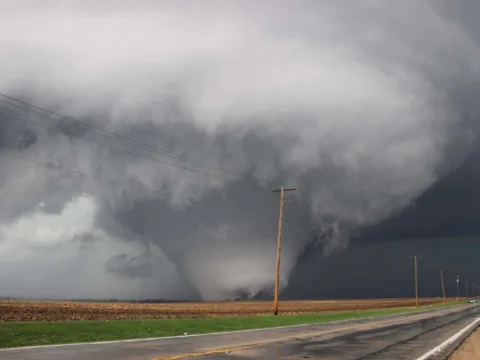
When you hear about tornadoes, you sometimes may catch a reference to the Fujita scale, or the F-scale.
But what’s the Fujita scale and why is it so important?
Let’s learn more about this wonderful tool that meteorologists have been using for years.
Tetsuya Fujita
The F in the F-scale is the abbreviation of Fujita scale, named after pioneering meteorologist Dr. Tetsuya Theodore “Ted” Fujita.
Fujita (1920-1998) was a Japanese scientist who did much of his scientifically significant work at the University of Chicago. Along with advancing the understanding of tornado vortices (funnels, or swirling columns of wind within tornadoes), Fujita also studied the structural damage caused by tornadoes.
The Fujita Scale
Just like hurricanes are classified by categories, tornadoes, too, are measured on a scale.
However, unlike hurricanes, tornado ratings (the Fujita scale) measure tornadoes by the amount damage they cause — not necessarily just on the wind speed.
With the amount of damage comes an estimate as to how strong a tornado’s wind speeds are. That’s a reason you’ll find wind speed ranges along with each of the categories on the Fujita scale.
The Fujita scale was initially proposed in 1971. Over the years, modifications have been made to the Fujita scale to improve its accuracy and reliability in recording tornado wind damage. The Enhanced Fujita (EF) scale was introduced in 2006.
Enhanced Fujita Scale Measurements
The Enhanced Fujita scale categories are well documented and are used by meteorologists and tornado chasers to measure the severity of tornadoes. Here is a breakdown of the Fujita scale:
- EF-0: Winds of 65-85 MPH; damage to branches and small trees, signs.
- EF-1: Winds of 86-110 MPH; severe damage to roofs, mobile homes, cars, windows and doors.
- EF-2: Winds of 111-135 MPH; roofs, trees, and mobile homes destroyed.
- EF-3: Winds of 136-165 MPH; roofs and walls destroyed on houses, trains knocked over from tracks, trees destroyed, major buildings sustain major damage.
- EF-4: Winds of 166-200 MPH; houses destroyed, small structures blown off foundations, cars blown away.
- EF-5: Winds over 200 MPH; framed houses lifted off foundations, cars thrown at least 100 yards, damage to steel-reinforced concrete buildings.
Has An F-6 Or EF-6 Tornado Ever Occurred?
While the Fujita scale has been modified over the years, the theory that an F-6 tornado could exist (319 MPH to 379 MPH on the old Fujita scale) was debated. None had ever been officially recorded, however. It’s fair to say that the F-6 rating caused a bit of controversy in the tornado community.
Some very strong tornadoes seen in Oklahoma City on May 3, 1999 came very close to producing the kind of catastrophic damage that could have been theoretically recorded as an F-6 tornado on the old Fujita scale.




